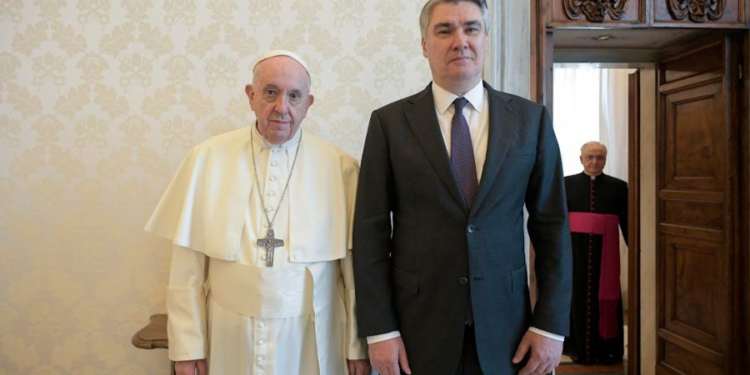“In addition, several international and regional issues were discussed, including the situation of the Croatian people in Bosnia and Herzegovina.”
The Republic of Bosnia and Herzegovina proclaimed independence in 1992 amid the breakup of Yugoslavia, which was followed by the Bosnian War that claimed an estimated 100,000 lives.
The presidents of Bosnia, Croatia, and Serbia reached an agreement to end Europe’s bloodiest conflict since the Second World War on Nov. 21, 1995, after negotiations at the Wright-Patterson Air Force Base outside Dayton, Ohio.
Under the General Framework Agreement for Peace in Bosnia and Herzegovina, Bosnia and Herzegovina would remain a single sovereign state, consisting of the Bosnian Serb Republic and the Bosniak-Croat federation, with Sarajevo serving as the undivided capital city. The text resulted in the creation of a political apparatus described as “the world’s most complicated system of government.”
Catholics — most of whom are Croats — are a minority within the country, comprising 15% of the population, according to a 2013 census. Half of the population is Muslim and around 30% belong to the Serbian Orthodox Church.
Medjugorje, a popular Catholic pilgrimage destination, is located in southwestern Bosnia and Herzegovina, 12 miles east of the country’s border with Croatia.
Credit: Source link




